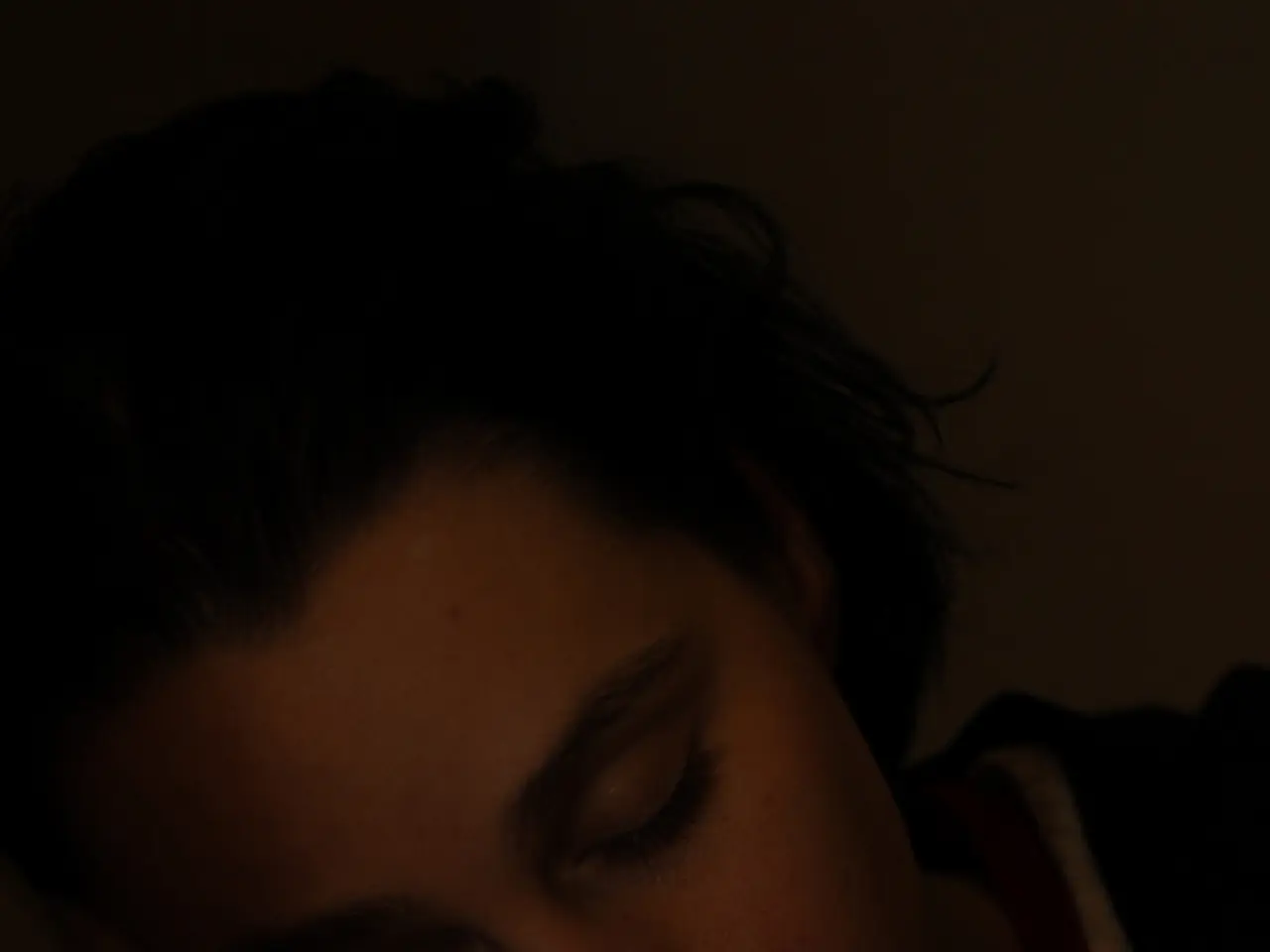Unveiling the Process of Brain Awakening: Reasons for Sometimes Painful Waking Experiences
The process of transitioning from sleep to wakefulness has long been a subject of fascination for scientists, and a recent study conducted by researchers in Switzerland has shed new light on this complex phenomenon. The study, published in the prestigious journal Current Biology, delves into the intricate brain activities that occur during the waking process and their impact on immediate feelings of alertness.
The research involved more than 1,000 awakenings from 20 participants, each wearing 256 EEG sensors on their scalps. This setup is significantly more than the usual EEG setup, allowing for a detailed analysis of brain activity during the waking process.
The study revealed that the brain's wake-up process is a precise, sequential sequence, beginning in the frontal regions of the brain and spreading backward towards posterior areas. This activation pattern helps to reorient consciousness and prepare the body for interaction with the environment.
The study also found that the process of awakening differs depending on whether it occurs from REM (rapid eye movement) sleep or non-REM sleep. If awakening occurs from REM sleep, the brain shifts directly to fast wake-like activity, promoting immediate alertness. In contrast, waking from non-REM sleep involves a more gradual transition marked initially by slower brain waves before faster wakefulness patterns emerge. This slower transition can cause grogginess or sleep inertia.
The study's findings may be used in future research to predict sleepiness in those with sleep apnea or to control sleep-related seizures. They could also help identify signs of hyperarousal in sleep disorders. Moreover, the findings may improve the detection of sleep disorders and help identify the underlying neural substrates.
Understanding the brain's wake-up process is of major interest to researchers, as it could help improve our understanding of cognition and behavior and aid in the identification of sleep disorders. The study's findings provide valuable insights into the complex interplay between the brain's activation patterns, circadian rhythms, and sleep pressure, which collectively determine alertness levels upon waking.
During sleep, our brains undergo changes, shifting from alpha oscillations to theta patterns, sleep spindles, and delta waves. The circadian system, controlled by the hypothalamus—specifically the suprachiasmatic nucleus (SCN)—regulates the timing of wakefulness and sleep by responding to light signals from the retina. Light exposure inhibits melatonin production, a hormone that induces sleepiness, thus promoting wakefulness. Melatonin levels drop around dawn, signaling the brain and body to prepare for wakefulness.
In conclusion, the transition from sleep to wakefulness is a complex, stage-dependent brain process involving a frontal-to-posterior activation pattern, modulated by circadian rhythms and sleep pressure. This explains why people sometimes feel instantly alert upon waking and other times feel groggy or sleepy before fully becoming awake. The Swiss study provides a significant step forward in understanding this process, with potential implications for various fields of research and clinical practice.
- The new study in the field of neuroscience has pointed to the compelling link between brain activities during wakefulness and immediate feelings of alertness, advancing our understanding of health-and-wellness.
- The research in biological science on the details of the wake-up process has shown that the sequence of brain activation, starting from the frontal regions, plays a crucial role in reorienting consciousness and preparing the body for environmental interactions.
- In addition to providing insights into the complex interplay between brain activation patterns, circadian rhythms, and sleep pressure, the study's findings also have potential applications in future research within sleep-related disorders like sleep apnea or sleep-related seizures.




